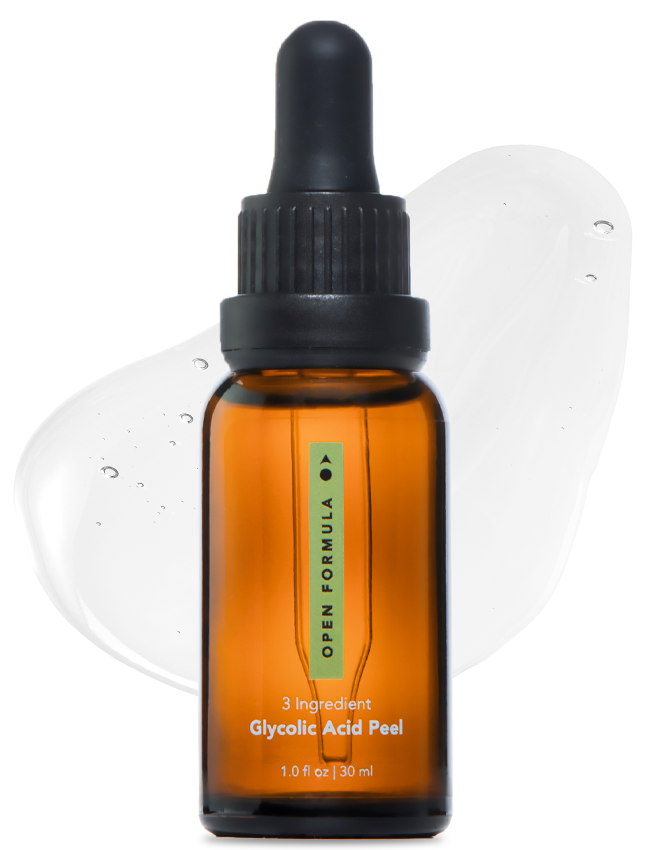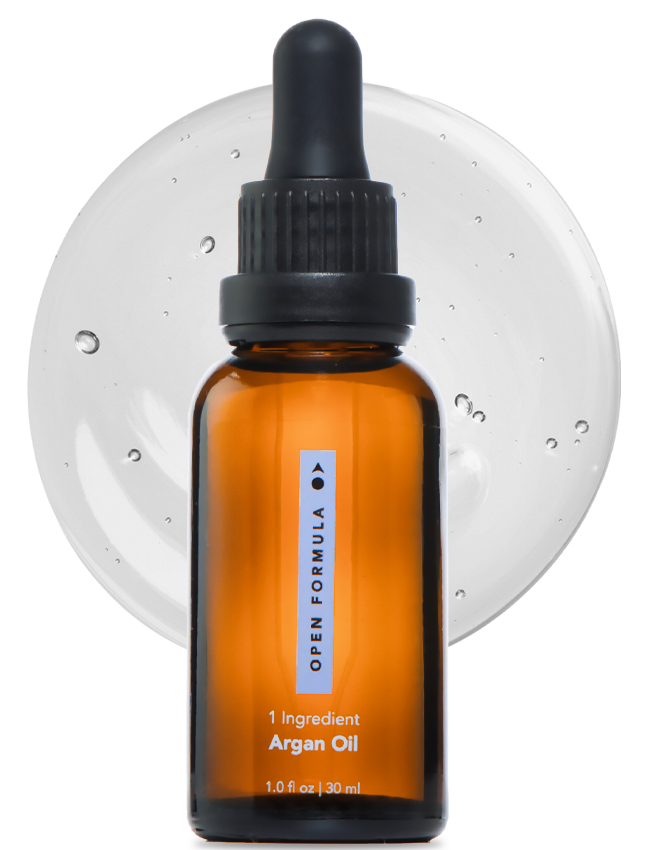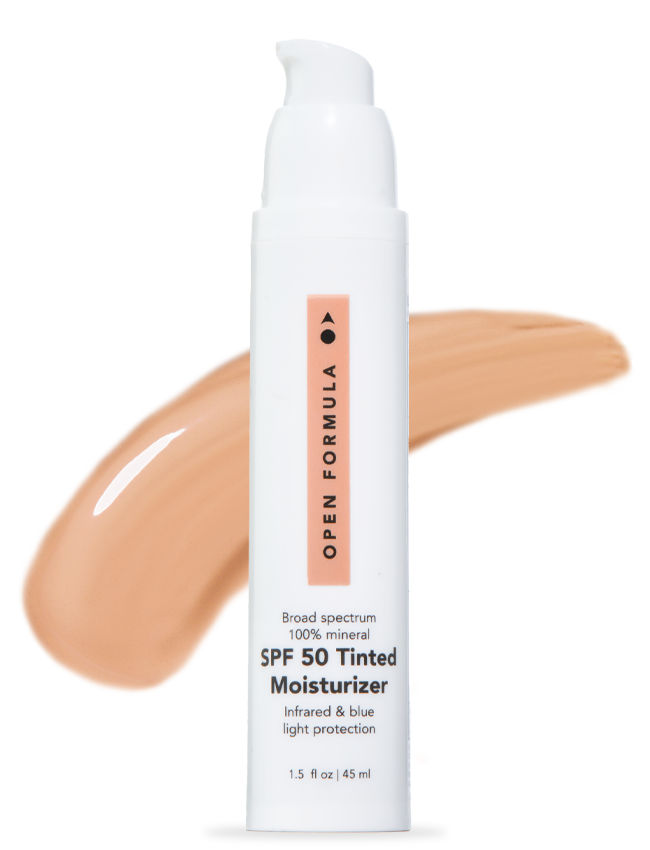To get visible results from skincare products, you have to pick the right ones for your skin type.
The problem?
There’s a lot of us out there thinking - “What are the different skin types? And what’s my skin type?!”
This guide is here to clear up any confusion about how to tell your skin type. And to set you up on the path to great skin. The first step is getting to know your skin type.
So, what’s my skin type?
Once you find it, knowing how to create a skin routine that suits your skin is easy-peasy, especially with our skin regimen quiz. But first, we need to look over the different types, and then do a super-easy find your skin type test with a piece of tissue. Yep, that’s literally all you need to find out your skin type!
What are the different skin types?
There are 5 main skin types
If you’re thinking, “That’s weird, why isn’t acne included?” It's because acne is a condition that can happen to any skin type. We’ll touch on skin conditions later.
#1 Oily Skin
You might have an oily skin type if your skin seems to be a little bit greasy (for lack of a better word) no matter what you do to it. It’s basically dewy skin, but not in a cool Instagram way! Scientifically speaking, it happens when our oil glands (the glands responsible for producing our natural skin oil, aka sebum) produce way more oil than our skin needs. Sebum is actually really important for keeping skin healthy, but too much of it is what leads to that overly dewy, greasy look.
Signs that you may have oily skin:
- Your skin feels oily, even after washing
- Your pores are quite visible, especially on your cheeks and nose
- If you dab a tissue on your face, you can see the oil on the tissue.
#2 Dry Skin
This is the polar opposite of oily skin. Someone with dry skin type does not have enough oil production going on, resulting in skin that lacks oil. I know, it sounds like heaven to someone with oily skin, but this dry skin has a lot of its own long-term challenges. Dry skin can feel really uncomfortable - it usually feels way too tight, especially after washing. It might also look dull due to the lack of moisture. You might also have dry skin if your skin “drinks up” moisturizer, but still feels tight and stretched after. Dry skin is also a little bit more vulnerable to irritation and visibly red patches too. If any of these signs ring a bell, then it’s likely that you have dry skin.
Signs that you may have dry skin
- Your skin has visible flakes at any given time
- Your skin feels tight, especially after cleansing
- Your skin doesn’t have any radiance or glow
#3 Normal Skin
Normal skin types have won the skin type lottery! They’re not too oily, not too dry—literally just right. If your skin is normal, it’s likely that you never notice that it’s feeling tight, nor too oily. Products rarely make your skin sting or breakout, and your skin also hardly flakes or feels irritated.
Signs that you may have normal skin:
- You rarely breakout or have blackheads
- Your skin never feels tight or has visible flakes
- Your skin never feels too greasy
#4 Combination Skin
Did you know it's possible for your skin to technically fall into two skin type categories? That's called combination skin. In most cases, it's when your skin is both oily and dry in certain parts of the face. Hallmarks of combination skin are oiliness mainly in your T-Zone area - that's your forehead down to your nose and chin, but everywhere else is normal to dry.
Signs that you may have combination skin:
- Only your T-Zone (forehead, nose and chin) is oily
- The sides of your face are typically dry
- You have a hard time balancing skincare for the oily and dry parts of your face
#5 Sensitive Skin
If you have a sensitive skin type, then your skin is very reactive to pretty much everything. Products usually leave a burning or stinging feeling (ouch!) and your skin might even break out to rashes frequently. Your skin might also flush red and feel very warm easily, especially in reaction to skin care and makeup products.
Signs that you may have sensitive skin
- Products frequently feel burning or stinging on your skin
- Your skin is flushed red or has red patches
- Your skin may react with rashes and bumps to products
Skin conditions
What about dehydrated skin?
Dehydrated skin is not technically a skin type, but rather a skin condition. And yes, there is a difference between skin type and skin condition!
You can't easily change your skin type, but a skin condition can be reversed. It's a temporary state and can easily be corrected with the right treatment - case in point, dehydration. Unlike dryness (which is when the skin lacks oil), dehydrated skin lacks water.
You can tell if your skin is dehydrated when it doesn't bounce back after doing the pinch test. Another key to tell if your skin is dehydrated is if your skin seems a little more wrinkled than it usually is. Hydrated skin looks 'plumped up' in comparison to dehydrate skin because it's hydrated and full of water.
What about acne?
Like dehydrated skin, acne is a skin condition that doesn’t discriminate--it can affect all skin types. While oily skin is more likely than other skin types to have clogged pores and blackheads, it’s not the only thing that contributes to acne. Other factors like hormones, birth control, dirty makeup brushes, and using incorrect skincare products can make this condition flare up, regardless of skin type!
What Determines Skin Types?
If you’ve figured out what skin type you are, you might be wondering, can your skin type change?
The answer?
No (and yes.) You might not be able to change your skin type to one you want, but it can change depending on certain factors—genetics and hormones.
As much as you might like to change from oily to normal, your skin type is largely predetermined by genetics. You probably have the same skin type as one (or both) of your parents, and how their skin behaves during their lifetime is a good indicator of how yours will too.
However, there is one factor that can change your skin (but you don’t get to decide how it changes your skin), and that’s hormones. They change as we age and that affects our skin, but we don’t have a choice in how it affects our skin.
The Test-- How Do I Find Out My Skin Type?
Here’s how to do the skin type test. The only extra thing you’ll need is a single ply of tissue. The test is simple—wash your face with whatever you normally wash it with, then wait thirty minutes. Note how your skin feels (any sensations or tightness), then dab your face with the tissue. Here’s how to interpret your results.
Oily Skin = Skin feels oily plus there’s oil on the tissue.
Dry Skin = Skin feels tight, there’s no oil on the tissue.
Normal Skin = Skin feels ‘just right’, no oil on the tissue.
Combination Skin = Skin feels tight in some parts, plus there’s oil on the tissue.
Sensitive Skin = Skin feels uncomfortable, stinging, or itching, and there’s no oil on the tissue.
No more wondering “Which skin type am I?!” after this! Now you can get to know your skin type and use the right products for it for glowing, healthy skin. Discover your new skincare with our skin regimen quiz >>.






























